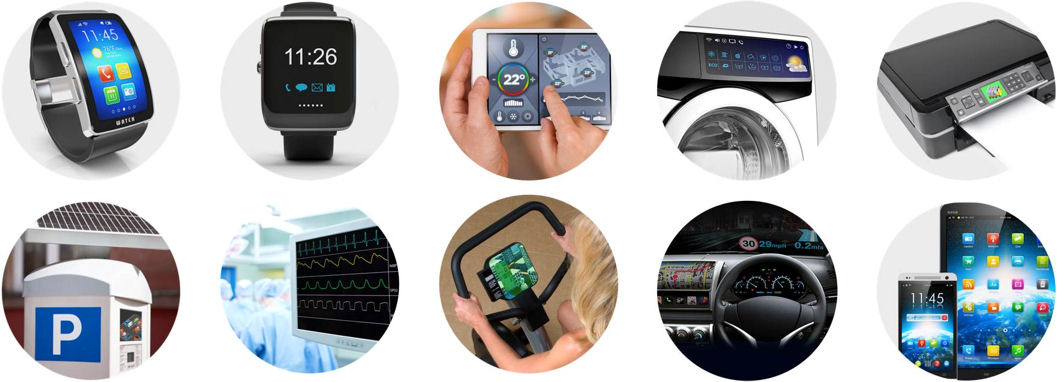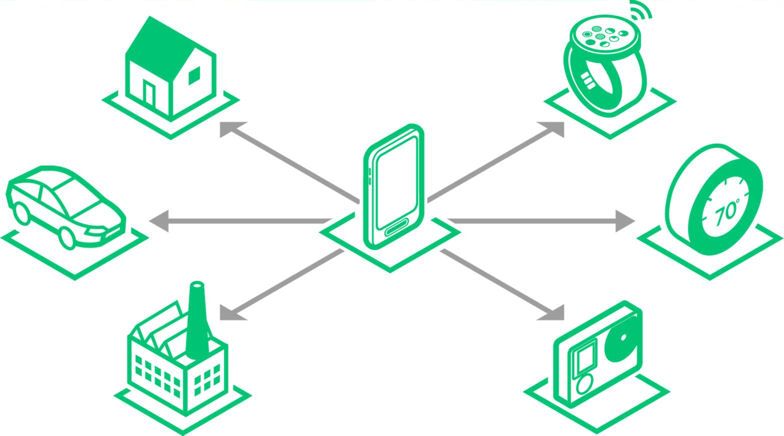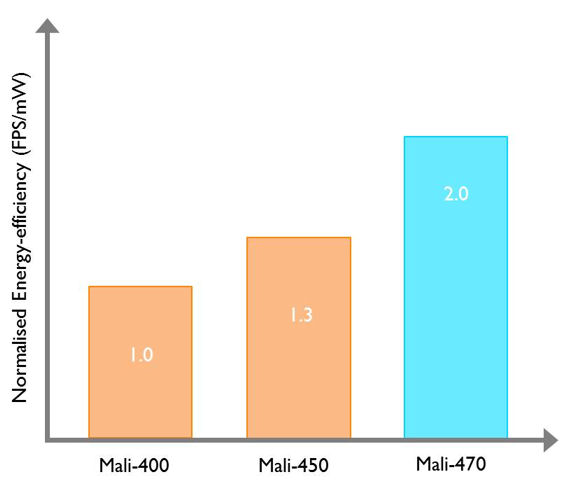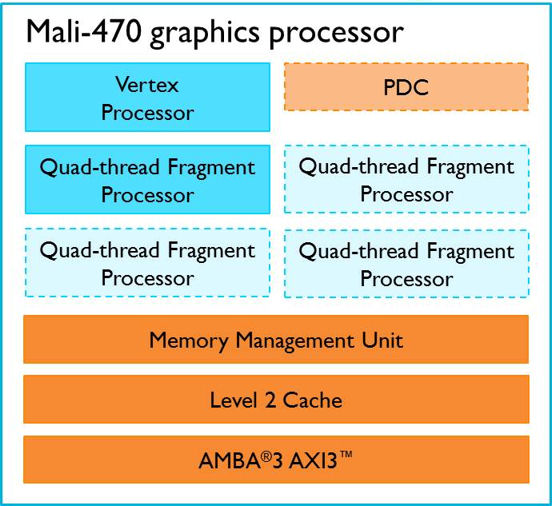Affiliate links on Android Authority may earn us a commission. Learn more.
Mali-470 to enable smartphone-quality visuals on wearable and IoT devices

The Media Processing Group at ARM recently announced a new highly-efficient graphics processing unit (GPU), the ARM® Mali™-470 GPU, to enable smartphone-quality visuals on wearable and IoT devices.
A growing market with unique challenges
The wearables market has been growing steadily for many years with more and more devices and applications entering the market. ARM has long been associated with wearables, with many devices based on ARM technologies and more recently with the “Wearables for good” challenge in partnership with UNICEF and frog. That association now extends to graphics processing with the Mali-470 GPU.
Mali-470 is the latest in the Mali-400 series of graphics processors that run applications using the ubiquitous OpenGL® ES 2.0 graphics standard. The Mali-400 family of GPUs has shipped in more than a billion devices worldwide and is favoured where efficient graphics processing is a must. An example being the growing number of System-on-Chips (SoCs) that are designed specifically for wearable and IoT applications, such as MediaTek’s MT2601 SoC, announced earlier this year in support of Google’s Android Wear software: MediaTek Introduces MT2601 in Support of Google’s Android Wear Software.
The key advantage of Mali-470 is that it consumes half the power of the Mali-400 GPU, helping device manufacturers bring the smartphone user experience to environments with even greater power-constraints.
Expanding the smartphone user experience

For those of us who remember Video Cassette Recorders, and the frustration of trying to program the timer for the first time, it’s hard to imagine anyone tolerating that kind of user experience ever again. Yet, across many devices, the user interface quality has fallen far behind that of our smartphone.
From watches to thermostats, industrial control panels in factories and warehouses, multi-function printers in offices, infotainment systems in cars and home appliances, highly efficient graphics processing is essential to render intuitive user interfaces.
The challenge many of these devices face is power consumption and how to reduce it as the interface becomes more sophisticated – we think Mali-470 is the answer.
Why OpenGL ES 2.0?
Every pixel matters in delivering high-quality user interfaces. This is especially true for smaller screens where every pixel must play a role in conveying information clearly or providing intuitive controls or both.
The majority of Android™, Android Wear and other emerging operating systems, such as Tizen™, use OpenGL ES 2.0 for modern user interfaces, mapping, casual gaming, etc. OpenGL ES 2.0 offers the ideal balance between per-pixel control with programmable shaders and energy-efficiency. Mali-470 uses the same industry-standard OpenGL ES 2.0 driver stack as the Mali-400 GPU so there is no need to re-optimise existing applications – anything written for Mali-400 will work seamlessly on the Mali-470 GPU.
More recent versions of OpenGL ES have introduced a number of additional features to support immersive video games; however the OpenGL ES 2.0 feature level is the most efficient for user interfaces that appear on wearable and IoT devices.

Half the power consumption
Building on the success of the Mali-400 GPU, Mali-470 delivers the same rich performance at the same process geometry while halving the power consumption. This provides SoC manufacturers with scalable options to enable them to create embedded graphics subsystems that meet the needs of new low-power devices.

Mali-470 achieves this by building on the energy-efficiency gained in Mali-450 and applying focussed design changes to the Vertex and Fragment Processors. This results in half the power consumption with the same performance when compared to the Mali-400. Vertex processors construct the “wire frame” of a scene and the fragment processors perform the per-pixel shading, colours and effects such as transparency. For wearable device resolutions a single fragment processor is sufficient, but Mali-470 has the ability to scale to four fragment processors to support the higher resolutions of devices with larger screens.

design supports screen resolutions from 640×640 to 1080p at 60FPS 32bpp.
The design improvements in Mali-470 can be grouped into three areas of equal importance: Quad-thread scheduling, Microarchitectural and Datapath optimisations.
Quad-thread scheduling optimisations:
- Enforcing the grouping of quads (2×2 pixel threads) so that the frequency of control and state updates within the pipelines are significantly reduced.
- Optimising many of the functional blocks to operate on quads.
- Centralising a subset of per-quad state and accessing it only when necessary, rather than clocking it through the pipelines.
Microarchitectural optimisations:
- Making aggressive use of clock-gating throughout the design, including clock-gating of all function-orientated L1 caches.
- Bypassing functional blocks whenever instruction execution can proceed without them.
Datapath optimisations:
- Optimising datapaths to make targeted use of fixed-point arithmetic, rather than floating-point arithmetic for vertex processing.
Wearables and beyond…
Designed for wearables and IoT devices, the Mali-470 GPU will benefit a multitude of devices that require a rich UI and where energy-efficiency is important, especially when coupled with ARM CPUs such as the Cortex®-A7 and A53 processors. You can see some of the possibilities below:

To summarise, the Mali-470 graphics processor further expands the smartphone experience into a wider range of devices including wearables, home gateways and appliances, industrial control panels, healthcare monitors and even new entry-level smartphones.
With half the power consumption of the billion selling Mali-400 GPUs, Mali-470 opens the door for more vibrant user interfaces and provides exciting opportunities for designers to innovate with graphics in even more power-constrained environments. We expect to see Mali-470 appearing in first devices from early 2017.
If you want to know more about ARM, its GPUs, its microcontrollers, its Cortex-A processors, and its diverse eco-system then be sure to checkout ARM’s Connect Community at https://community.arm.com/welcome
Republished with permission from ARM – Read the original post on ARM’s Connected Community.